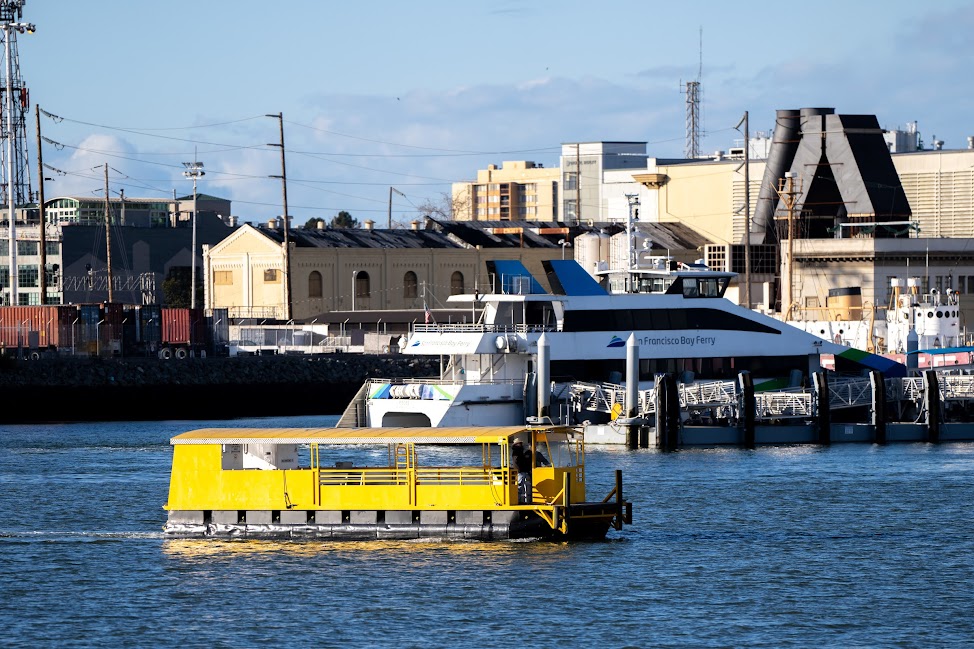Woodstock, the Oakland-Alameda water shuttle, carried 34,000 riders and 7,400 bikes since the start of service last July. "The jury is in on this," said Seamus Murphy, director of the San Francisco Bay Area Water Emergency Transportation Authority (WETA) which operates the service. "This should be a permanent service."
Murphy said that to some 50 people who showed up for a Saturday celebration of the service and the formal kickoff of an expanded schedule. On November 6 WETA started operating 52 additional runs a week from the foot of Broadway in Oakland to Bohol Circle Immigrant Park in Western Alameda.
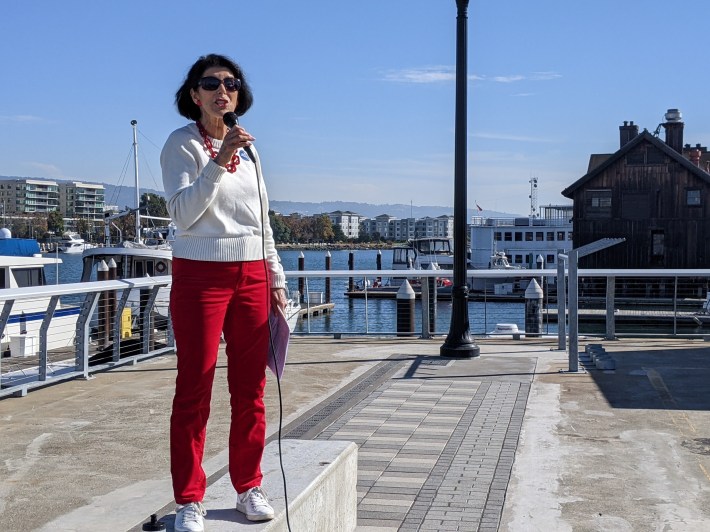
Alameda Mayor Marilyn Ezzy Ashcraft, who also spoke at the event, held at Bohol Circle, extolled the new boat's role in the larger transportation picture. "Look how close we are to the Amtrak station," she said between blasts of the train horn carrying across the estuary. "Taking the boat to Amtrak is my favorite way of traveling to Sacramento."
The boat also puts residents of Western Alameda in walking or biking distance of BART and downtown Oakland. And it allows residents of Oakland's Jack London Square neighborhood, a notorious food desert, to access the three nearby grocery stores and other services in Western Alameda without a car or an unreasonably circuitous and time-consuming bus trip.
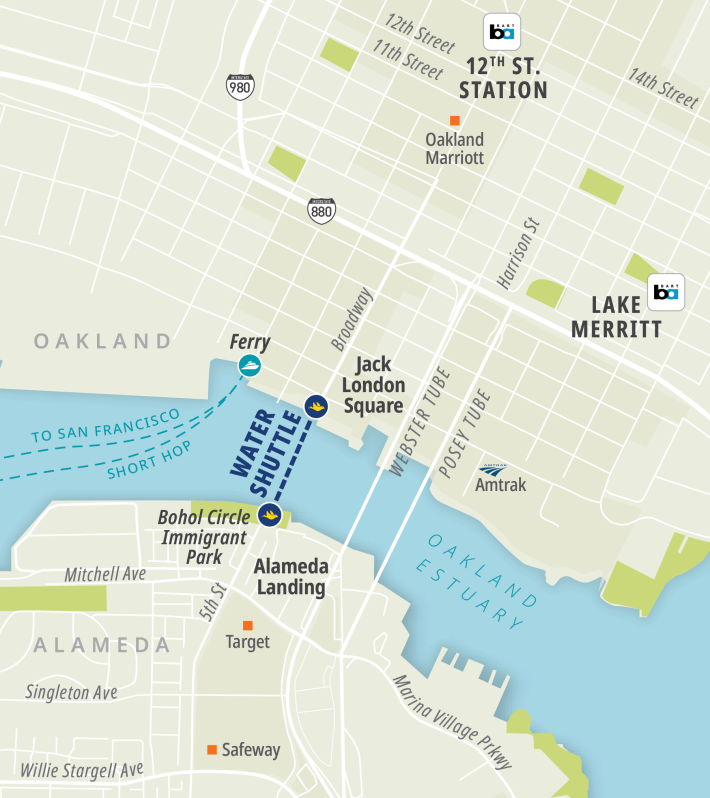
Nevertheless, Ashcraft still seemed to frame the importance of the ferry as a way to mitigate driver delays caused by the pending "Oakland Alameda Access Project (OAAP)." That intentionally misnomered project is, of course, just another Caltrans and Alameda-County ploy to keep widening freeways (or in this case "enhancing" ramps into and out of the tunnels that join Oakland and Western Alameda). In Streetsblog's view, if Ashcraft were dedicated to reducing greenhouse gases and vehicle miles traveled, she'd be drafting legislation to fully fund the water shuttle and shut down such a polluting, counter productive boondoggle as the OAAP.
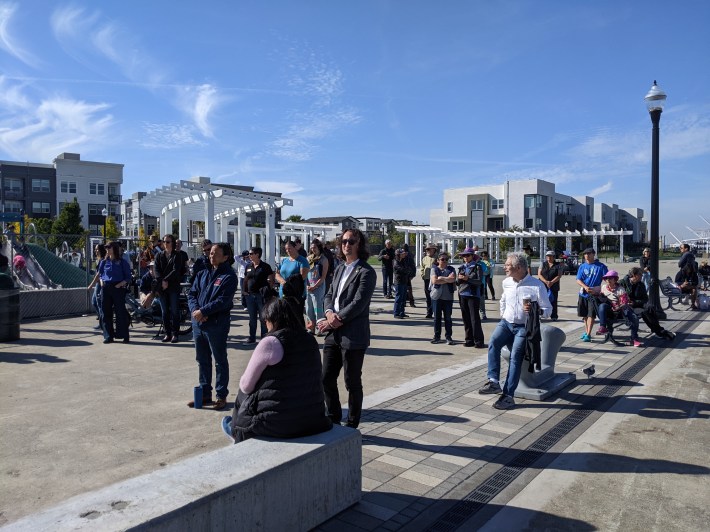
As Streetsblog has written previously, the real solution to improving "access" between Oakland and Western Alameda is now staring lawmakers in the face. Their only mission should be to fully fund the water shuttle with purpose-built docks and bi-directional ferries that run seven days a week. That will actually do what lawmakers say they support—reduce vehicle miles traveled and give people a viable and reliable alternative to driving.
The new schedule, meanwhile, eliminates the long refueling stops that left some breaks in service during the day that were as long as two-hours. Crews told Streetsblog they didn't need nearly so much time as originally anticipated to refuel or to dock and turn the boat around.
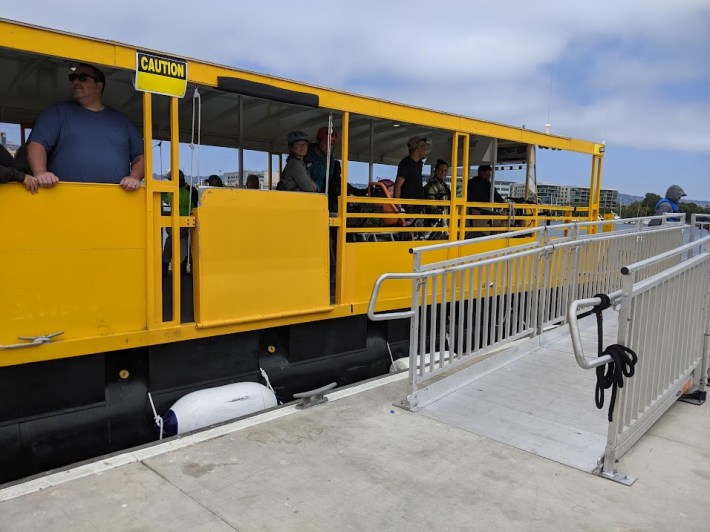
Now the goal is to get the $2 million grant increased to turn it into a permanent service and to have the boat (or boats, since an additional boat would help increase runs even further) run seven days a week. Even the new schedule still has no service on Mondays and Tuesday. The OAAP car project, meanwhile, is going to cost north of $100 million.
"We've already heard from riders," said Ashcraft. "They want it to go more hours and seven days a week." Ashcraft urged advocates in the audience to push lawmakers at all levels to make it happen. The funds are there, it's just a matter of getting lawmakers to stop burning the money on more freeway widening and instead redirect it to trains, buses, bikes, and boats.
